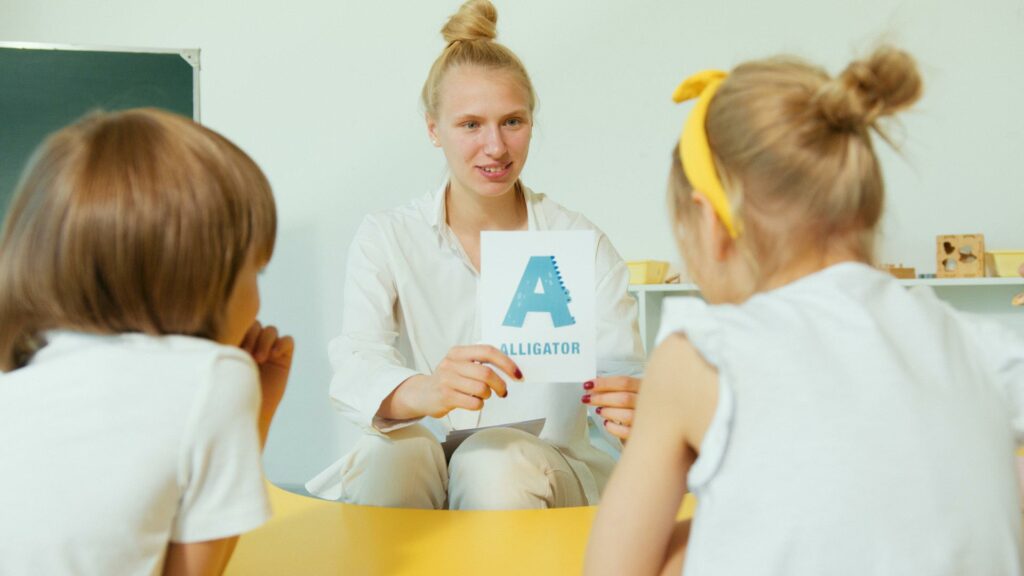Phonics is an essential tool in teaching children how to read and write, forming the foundation for language learning. For parents exploring the best ways to help their children succeed, understanding phonics and its benefits can be a game-changer. This article delves into what phonics is, how it works, and why it’s a critical component of language development.
What is Phonics?
Phonics is a method of teaching reading and writing by helping learners connect sounds with letters or groups of letters in a language. It focuses on the relationship between spoken sounds and their written representation. For example, when children learn that the letter “b” makes the /b/ sound, they are engaging with phonics.
By breaking down words into individual sounds (phonemes) and blending them together, phonics helps students decode unfamiliar words and develop literacy skills more effectively.
The Benefits of Phonics in Language Learning
Phonics offers numerous advantages for children learning a language, whether it’s their first language or an additional one:
1. Builds Strong Reading Foundations
Phonics helps children understand how words are constructed, enabling them to decode unfamiliar words. This skill fosters confidence and fluency in reading, which are essential for academic success and lifelong learning.
2. Enhances Spelling and Writing
By teaching the sounds associated with letters and letter combinations, phonics makes spelling more intuitive. Children learn to spell words by sounding them out, reducing reliance on rote memorisation.
3. Boosts Comprehension Skills
Phonics equips children with the tools to read accurately, which improves their ability to understand and process written text. Strong reading comprehension is vital for success in all academic subjects.
4. Supports Pronunciation and Listening Skills
Phonics encourages children to listen carefully to sounds and patterns in language, improving their pronunciation and auditory processing. This is particularly beneficial when learning a second language.
5. Encourages Independent Learning
Once children master phonics, they can approach unfamiliar words with confidence. This independence not only supports academic growth but also nurtures a love for reading.
6. Tailored to Various Learning Styles
Phonics appeals to auditory, visual, and kinesthetic learners. Activities like singing phonics songs, recognising letters, and practising sounds with hands-on materials make learning engaging and inclusive.
Practical Tips for Teaching Phonics
If you’re a parent wondering how to incorporate phonics into your child’s language-learning journey, here are some practical suggestions:
1. Start Early
Phonics can be introduced as early as age 3 or 4, when children begin recognising letters and sounds. Start with simple activities, like teaching the sounds of individual letters, before moving to letter combinations.
2. Use Fun and Interactive Methods
Children learn best through play. Incorporate games, songs, and storytelling to make phonics enjoyable. Flashcards, magnetic letters, and phonics apps can also be effective tools.
3. Practice Blending and Segmenting
Blending involves combining sounds to form words (e.g., /c/ /a/ /t/ becomes cat), while segmenting involves breaking words into individual sounds (e.g., dog becomes /d/ /o/ /g/). Practise these skills regularly.
4. Gradually Introduce Complexity
Start with simple letter sounds before progressing to blends (e.g., sh or ch), digraphs (two letters that make one sound, like ph), and trigraphs (three letters making one sound, like igh).
5. Be Patient and Consistent
Every child learns at their own pace. Regular, short sessions are more effective than long, infrequent ones. Celebrate small milestones to keep your child motivated.
Types of Phonics
Phonics can be taught using various approaches. Here are the four main types:
- Synthetic Phonics
Learners are taught to convert letters into sounds and then blend these sounds to form words. - Analytic Phonics
Focuses on analysing whole words to detect patterns and sounds, rather than converting letters into individual sounds. - Analogy Phonics
Teaches children to use familiar word parts (e.g., -ight in light) to decode unfamiliar words (e.g., flight). - Embedded Phonics
Phonics instruction is integrated into reading activities rather than being taught explicitly.
Why Phonics Matters
Phonics plays a pivotal role in a child’s language learning journey by laying the foundation for reading, writing, and comprehension skills. It offers a systematic approach that not only boosts academic success but also fosters a lifelong love for learning.
Conclusion
At Open Minds Campus, we understand the importance of phonics and offer resources and support to help your child thrive. Explore our website to learn how we can assist in your child’s educational journey.
Investing in phonics education is an investment in your child’s future. With the right approach, you can unlock their potential and set them on a path to language mastery.
Common Questions About Phonics
What is Phonics?
Phonics is a way of teaching children to read by helping them understand the connection between letters and the sounds they make. For example:
- The letter “b” makes the /b/ sound, like in the word “bat”.
- The letters “ch” together make the /ch/ sound, like in the word “chair”.
By learning these sounds, children can break down words into smaller parts, making it easier to read and spell. Phonics gives kids the tools to figure out new words and become confident readers.
What are the 4 types of phonics?
The four main types are: synthetic phonics, analytic phonics, analogy phonics, and embedded phonics.
How do I teach phonics?
Teach phonics by:
- Starting with simple sounds and gradually increasing complexity.
- Practising blending and segmenting.
- Using games, songs, and hands-on activities to keep learning fun.
What age to start phonics?
Phonics can be introduced around ages 3 to 4, when children start recognising letters and sounds.



